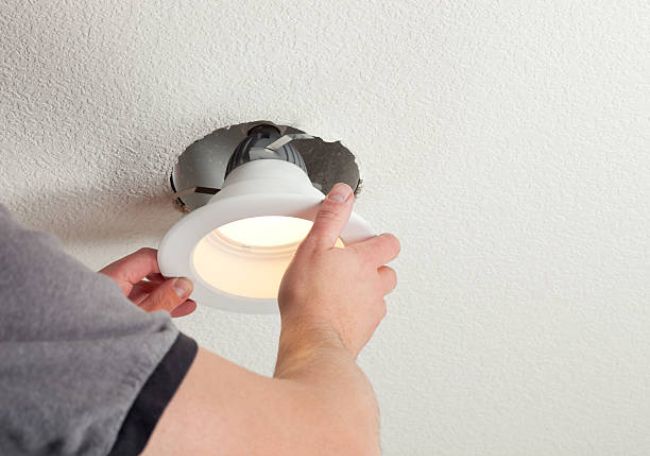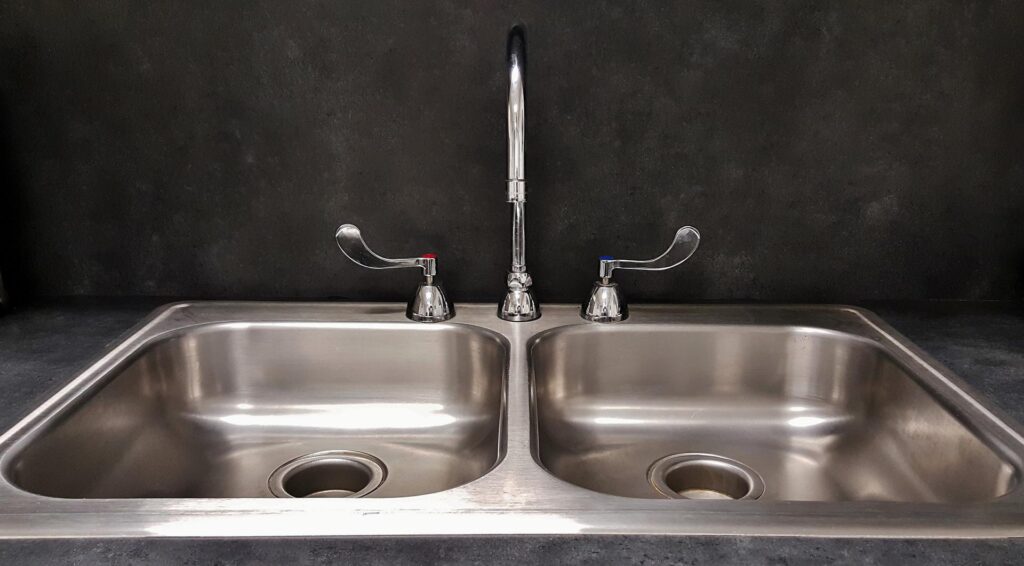When designing the layout for Can lights in your kitchen, a good rule of thumb is to place one light for every 25 sq. feet of space.
This is just a basic standard; every situation may differ slightly depending on what effect you are trying to achieve and whether the kitchen is regular in shape.
We have put together this buyer’s guide to help you choose the best-recessed lights for your kitchen.
It discusses all the factors you should consider before buying the Can lights and the steps you should follow to design the best lighting plan for your kitchen.
Factors To Consider Before Choosing The Right Can Lights.

1) The Style and Look
Naturally, the style and look of the light fixture play a vital role in your selection.
Figuring out which type of trim will look best in your kitchen will likely play the most significant part in increasing the aesthetic appeal of your kitchen.
Keep in mind factors such as the finish or colour, the shape of the light, or any extra ornamental features that may be included.
2) The Purchase and Installation Costs
Good news! Can light fixtures be one of the cheapest kitchen lighting options in terms of the cost per light?
However, many factors may change the overall price per unit, and you may spend more than intended.
To help you stay within the budget, keep these variables in mind:
Number of Lights – Think about how many lights you want in the kitchen.
Don’t just consider the individual price when choosing between different lighting options.
Instead, consider the total cost for all the fixtures you buy for a particular space.
Installation Cost – Are you hiring a professional to install the Can lights?
If yes, add that cost to the overall budget you plan on spending.
Energy Usage – Thinking smartly can save you money.
Consider how much you’ll save in the long run if you install LED Can lights.
3) Amount of Light

There is a wide variety in the amount of different light types of fixtures produced.
You should consider how much brightness you will need in the kitchen and determine the number of Can lights you plan on installing.
Another factor to consider is whether other light sources are also present in the kitchen.
Will the Can Lights Work With a Dimmer?
Many Can lights can be connected to a dimmer switch, providing the additional functionality for accent lighting that will complement the primary light source within that area.
If you want to install multiple lights in one area, you should consider wiring them to the dimmer switch that offers you the perfect amount of light needed.
4) The Layout of Your Kitchen
Another important consideration is determining the best spacing for recessed lighting in your kitchen.
How you space out the Can lights will affect the amount of lighting plus the total cost of installation.
Ask yourself these questions:
- What are the measurements of the room?
- Which type of trim do you prefer?
- Do you want ambient or task lighting?
- What is the wattage of the fixtures?
- How many lights are you going to buy?
With these points in mind, make a rough sketch of the room and brainstorm possible layouts.
Think about the spaces that need a light directly above, like a kitchen island or sink.
Consider the Height of Your Ceiling.
It’s also necessary to take into account the height of your ceiling.
Typically, lights should be placed closer together if the ceiling is low and further apart if the ceiling is higher.
You should give at least two feet of space between each light in every direction and ensure that the lights are at least two feet away from the wall.
There’s a specific technique that is required in spacing out Can lights.
With a bit of planning and a calculator, you should be able to calculate how many lights you should buy for your kitchen.
5) Installation Requirements
If you are going to install Can lights yourself, the last thing you want is to start the job and find out that it is more complicated than you anticipated.
Installing Can lights can be tricky as you have to create a cavity in the ceiling for the housing, along with the proper wiring.
Replacing or upgrading one trim for another is a relatively simple project.
However, retrofitting Can lights into your kitchen is a much more complex job that a contractor best does.
6) The Bulb Type
It’s also advisable to consider the type of bulb that will be used.
Easy to Replace – Some Can light fixtures will work with regular bulbs that are easy to replace.
Others will require a particular bulb that may be more costly or harder to replace.
Energy Consumption – The bulb type also influences how much energy the light uses.
A LED or CFL bulb will let you save money over time in terms of lower energy bills.
Also, an LED bulb has the additional benefit of a long lifespan, so you wouldn’t have to replace it for many years.
7) The Voltage
The voltage is another factor that affects how bright your Can lights will be and the amount of energy used.
Homeowners usually purchase line-voltage kits that provide the standard voltage.
Still, you can also buy low-voltage kits with a more significant upfront cost but offer energy savings that pay off in the long term.
If you opt for a low-voltage option, you will probably have to invest in a special transformer for your Can lights to become compatible with your home’s electrical system.
Related Reading: What Type Of Lighting Is Best For My Kitchen – Click Here To Find Out.
Steps for Designing the Layout for Can Lights.

1. Identify the places that need lighting
When determining the space that you need to illuminate using Can lighting, it is not only the dimensions of the kitchen that are taken into account.
You also have to consider whether you are using the Can lights for general, task, or accent lighting in the kitchen.
You may want the lighting of your island, sink, stove, refrigerator, or a different area where you have placed your table.
You will have to space the lights strategically depending upon those needs, so you must identify the area that needs lighting before going on to the next step.
2. Choose the type of lights to be used
The choice of type and size of the Can lights you want to use will play a significant role in how to layout the lighting plan of your kitchen.
If you choose to use smaller lights that may produce fewer lumens, you may have to use more of them and place them closer together.
If you select larger 5-6 inch Can very bright lights, you may want to space them farther away from each other and use fewer of them.
3. Figure out the number of lights
Let’s suppose that you are trying to draw a layout for Can lighting for ambient or general lighting in the kitchen to get uniform light distribution.
When designing the layout for Can lighting, a good rule is to place a minimum of one Can light for every 25 square feet of area.
For example, if your kitchen is 10ft x 10ft (100 square feet), you will likely need a minimum of 4 Can lights (100 ÷ 25 = 4).
4. Determine the ceiling joists
One last thing you have to do to determine the layout of your kitchen lighting is to locate the ceiling joists.
This is an often ignored step that may result in a minor home improvement mishap.
You must first spot the location of your ceiling joists, and from there, you will need to modify your layout to ensure that the light fixtures can adjust between them.
This will also allow you to understand where and how to run the wiring during installation.
Related Reading: How Much For Kitchen Light Installation – Click Here To Discover.
How to design the Can light layout in the kitchen – FAQs
1. How far should Can lights be from kitchen cabinets?
Install your Can lights 12″ to 18″ away from the cabinets to illuminate the countertop.
2. How far apart should 6-inch Can lights be in a kitchen?
If the ceiling is 8 feet high, the maximum space between each 6-inch light should be 12 feet.
3. How many Can lights do I need for a 10×10 kitchen?
For general lighting, 8 (4 inches, 10 watts) or 4 (6 inches, 12 watts) Can light are required.
Related Reading: How Many Watts For Kitchen Lighting – Click Here Read More.
Summing it up
Planning is an essential part of any project, and lighting projects are not any different.
Follow the steps above when determining the layout for Can lighting in your kitchen.
Measure accurately, and mark the location of ceiling joists.
Use the guidelines provided above, along with some common sense depending upon your unique situation, to come up with the most suitable Can light layout for your kitchen.


